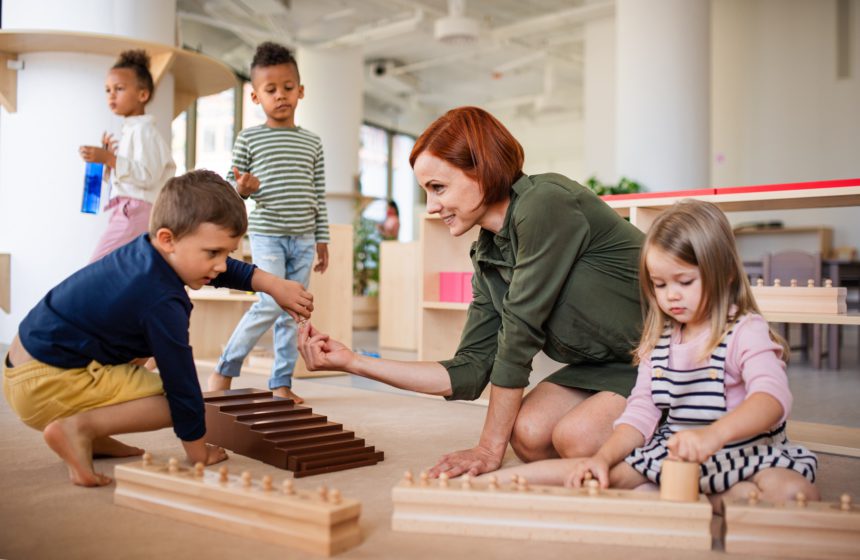The Montessori method, developed by Dr. Maria Montessori in the early 20th century, emphasizes child-led learning and the importance of a prepared environment. This educational approach is particularly effective in preschool settings, where fostering creativity and independence is crucial for a child’s development. In this article, we will explore how Montessori methods stimulate these essential skills in young children, supported by research, examples, and case studies.
The Montessori Environment: A Catalyst for Creativity
One of the cornerstones of the Montessori method is the carefully prepared environment. This space is designed to encourage exploration and creativity. Key elements include:
- Child-sized furniture: This allows children to navigate their environment comfortably and independently.
- Accessible materials: Montessori classrooms are filled with a variety of hands-on learning materials that children can choose from freely.
- Natural light and open spaces: These features create a welcoming atmosphere that inspires creativity.
Research indicates that children in Montessori settings show higher levels of creativity compared to those in traditional educational environments. A study published in the journal “Science” found that Montessori students demonstrated greater problem-solving skills and creativity in tasks requiring innovative thinking.
Encouraging Independence Through Choice
Independence is a fundamental aspect of the Montessori philosophy. Children are given the freedom to choose their activities, which fosters a sense of ownership over their learning. This choice is crucial for developing self-confidence and decision-making skills. Here are some ways Montessori methods promote independence:
- Self-directed learning: Children select their tasks based on their interests, which encourages intrinsic motivation.
- Mixed-age classrooms: Older children often mentor younger ones, reinforcing their own knowledge while fostering a sense of responsibility.
- Practical life skills: Activities such as pouring, sweeping, and dressing help children develop fine motor skills and self-sufficiency.
A case study from the American Montessori Society highlights a preschool in New York where children were allowed to choose their activities. The results showed that children who engaged in self-directed learning exhibited higher levels of independence and creativity in their projects.
Hands-On Learning: The Key to Creative Expression
Montessori education emphasizes hands-on learning, which is vital for stimulating creativity. Children learn best when they can manipulate materials and engage in experiential activities. Some examples of hands-on learning in Montessori classrooms include:
- Art projects: Children are encouraged to explore various art mediums, from painting to sculpting, allowing them to express their creativity freely.
- Science experiments: Simple experiments, such as growing plants or mixing colors, help children understand scientific concepts while fostering curiosity.
- Music and movement: Activities that involve rhythm and movement encourage creative expression and physical coordination.
Statistics from the National Association for the Education of Young Children (NAEYC) indicate that children engaged in hands-on learning experiences are more likely to develop critical thinking skills and creative problem-solving abilities. This aligns with the Montessori approach, which prioritizes experiential learning as a means to stimulate creativity.
Real-World Applications: Success Stories from Montessori Schools
Numerous Montessori schools around the world have successfully implemented these methods to foster creativity and independence. For instance, a Montessori school in San Francisco reported that students who participated in a project-based learning initiative showed significant improvements in both creative thinking and self-reliance. The project involved designing a community garden, where children took charge of planning, planting, and maintaining the garden.
Another example comes from a Montessori preschool in London, where children were encouraged to create their own stories using puppets and props. This activity not only enhanced their storytelling abilities but also promoted collaboration and communication skills among peers.
The Montessori method offers a unique approach to early childhood education that effectively stimulates creativity and independence in preschool children. By providing a prepared environment, encouraging choice, and emphasizing hands-on learning, Montessori educators empower children to explore their interests and develop essential life skills. The success stories and research findings underscore the effectiveness of this approach, making it a valuable model for educators and parents alike. As we continue to understand the importance of fostering creativity and independence in young learners, the Montessori method stands out as a proven pathway to achieving these goals.
